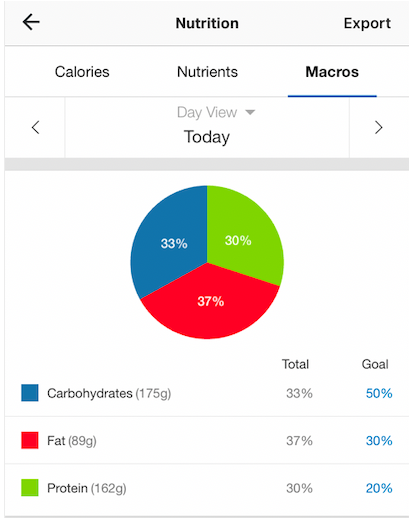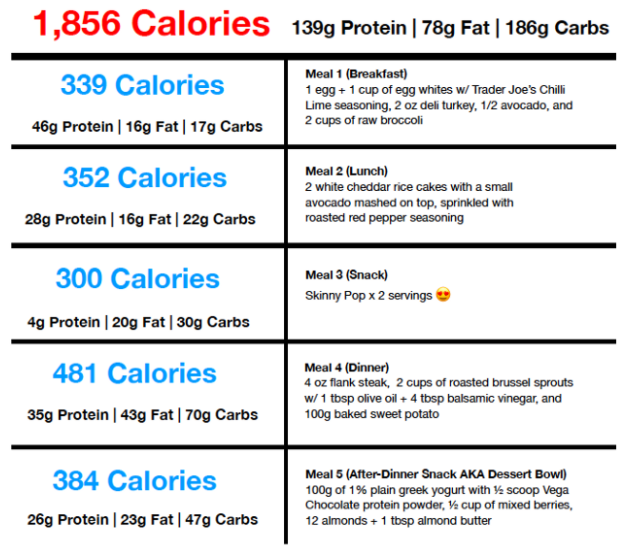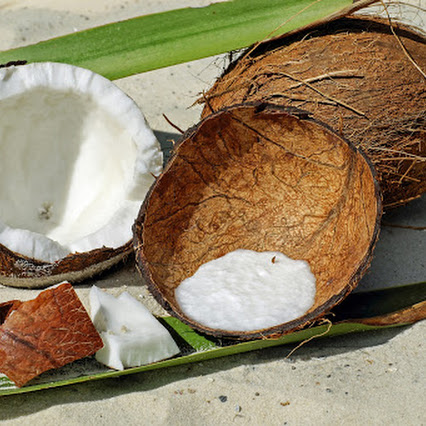How I Training My Body And How I Naturally Composed It In 1 Year
How I Training My Body And How I Naturally Composed It In 1 Year
I have been performing strength conditioning since I started my fitness journey in 2009. However, I didn't notice such drastic changes in both my body and strength while running until very recently.
I had a long-standing belief that if I changed my exercise routine too often, I would lose muscle or become slower in some way. Ridiculous, isn't it? But this is what I thought. We have a tendency to stick with what we know and fear that if we change what has worked in the past, we will likely lose all of the hard work we put in. It was only when I quit my previous routine and fully embraced a brand new one that I could see transformative changes in my body and my running performance.
In this post, I'll summarize my training regimen over the past year. In keeping with my other posts, I need to provide a quick disclaimer (especially for new readers) before diving into it. This plan worked for me - please don't use this as a definitive guide to getting exactly the same results. However, you are welcome to steal whatever you want.
My old routine
It is important to mention my old routine because even though I saw changes in the beginning, my body quickly stabilized and improvements were few and far between. For years, my focus and priority have been on running. The previous weekly split of my training included three upper-body strength training sessions and some legs and torso sprayed whenever I felt like it (which it never was) basically.
I managed to do one thing right: I trained upper body strength before cardio exercises. Despite this seemingly consistent routine, there are still times when I either neglect my lower body completely or run around before strength training. By the time I hit the strength, I would be far too tired to endure a long-term weightlifting session. Even worse, I was going to do the same exercises at the same weight level - out of habit and laziness.
When it came to nutrition, I was eating intuitively, neglecting to keep track of what I was putting in my body. Do you know where this got me from? Nowhere. I was eating healthy 80% of the time, but when I really started tracking my calories for fat loss goals, I was way off target. When I finally started tracking my calories and splitting up macros with Myfitnesspal, in a few days I entered my previous eating patterns and noticed that I had been struggling with excess calories most days of the week.
So what has changed? What was the trigger point that made me drastically change my body? This past January (2019), a long-term relationship came to an end - a relationship that it was extremely difficult to get away from, considering we have been interested in each other a lot.
Once it was finally over, I did what I always did - I directed all that energy into another activity to try to reduce feelings of sadness and loneliness. I decided to convert this energy into two places: my workouts and socialize with my close friends. I started trying new strategies with my diet and strength training. My previous routine was clearly not working. I started doing quick exercises, trying IF, and looking for new exercises to include in my routine. I desperately needed a change.
Continuous learning
I've been certified in personal training in the past, but the science has progressed so much since 2010 that I'm probably making a large part of that training obsolete. However, what really moved the mark in my training was the focus on changing the mindset. If I want to get stronger, improve my run, and change my body, then I need to let go of my old mindset and be open to trial and error to land on a routine that works best for me. Alongside this experience, I also constantly fueled my mind with magazines and articles online that would help me stay informed of any developments in the health and wellness field.
I found some resources that really moved the mark in my workouts. From a training perspective, I discovered Anabolic Alien's YouTube channel. At first glance, it's understandable to assume this channel is for juicing owners, but you'd be very wrong, buddy. Mike Rosa has super challenging training videos that target specific muscle groups. You can use the videos as an introductory, finish, or put some of his videos together for your entire workout. I'd rather do 2-3 targeted videos 3 times a week to work on my muscle endurance before heading to the gym and lifting heavyweights.
Another great resource that I discovered on YouTube is Mike Thurston. I haven't spotted many new exercises through Mike, but I love his advice on losing fat in general, staying slim while traveling, counting macros, etc.
Jeff Neepard is also one of my favorites. He uses scientifically-backed advice on training and nutrition and includes all the studies his research pulls from in the videos. I learned a lot about coaching from Jeff. On an unrelated note, he's also Canadian, and a very likable guy. To round up all of that, its video quality is also one of the best I have seen.
Last but not least, Stephanie Buttermore. Stephanie holds a Ph.D. And like Jeff, he uses science to provide accurate and reliable information about training and nutrition. Their videos are awesome - very attractive and informative.
Obviously, there are a lot of other things out there, but these are totally my favorites and I encourage you to check them out!
Training splits
Over the past three months, I've noticed the biggest improvement in my body by separating my workouts into push/pull days for upper body and then incorporating 2x core days and 1x leg day (or I'll split the legs into two days with my core). For those who are new to the terms (as you were six months ago), a pushup is where your muscles contract when the weight is pushed away from your body. These muscle groups include the chest, shoulders, triceps, quadriceps, and calves. The pull-up exercise, in turn, is where your muscles contract when the weight is pulled toward your body, and these muscle groups include traps, back, biceps, ham, and obliques.
So, instead of breaking my training days like the following example:
Split 1
Monday - arms / back
Tuesday - core + legs
Wednesday - arms/back
Thursday - core + legs
You can do something like this:
Split 2
Monday - upper body pull-up (biceps/back)
Tuesday - leg pull-up exercise (hamstrings / oblique) + core
Wednesday - Push Up Pushup (Chest / Shoulders / Triceps)
Thursday - Leg Push Up Exercise (quads/calves) + core
Split 1 has been an exercise I've been using for years and Split 2 is more similar to the way I train now. However, when I am writing this, I only use the push/pull method for my upper body. Now, it's in the details of the specific routine I'm using right now.
Strength training
For each session, I'll choose five different exercises for each muscle group and aim for a range of 8-15 repetitions for most exercises (also including a few exercises with higher reps). I will repeat each exercise three times (or three sets for each exercise):
Mon - Upper Body Pull - (Biceps / Back)
Tuesday - core + legs
Wed - Upper Body Push Up (Shoulders / Triceps / Chest)
Thursday - Core
Friday - Upper Body Lift - (Biceps / Back)
Saturday - upper body push-up (shoulders / triceps / chest)
Sunday - no power
Upper body sessions usually last about an hour or so, while lower body sessions take about 30-45 minutes. I cling to the top of my body religiously; However, I am relaxed with my legs. Depending on how I feel, I'll split my legs in two (with the pulp), only once with the core, or I'll split it completely and do the legs for her private Sunday session. This varies from week to week.
I will usually follow the same routine for a few weeks, and then I'll add some new exercises for each major muscle group and change the order. In order to see growth, your workouts must be challenging and they must drive your entire muscle group to fatigue. Otherwise, they will have no reason to grow. I always used to tell my clients to lift so that they couldn't lift physically - and then do another rep.
On the topic of muscle growth, an important term worth mentioning is progressive overload. Progressive overload includes weight gain, repetitions, repetition of training, and/or reduced rest periods per week. This is vital to see any physical changes in your body. I won't add many details on the topic in this post, but I'll add some additional reading on the topic in the footnotes if you're interested in learning more.
the heart
If you are the type of person who thinks heart disease is the way to lose weight, then you are right, but also very wrong. Let me be clear. Cardio burns calories, and at the end of the day, in order to lose weight, you need a calorie deficiency. You need a 3,500 calorie deficit to lose 1 pound of body fat. You can speed up this process by doing more cardio exercise, as it burns more calories than strength training. However, if you only do cardio, you are likely to experience major fluctuations in weight gain and loss, as your body composition will remain relatively the same. On the other hand, if you do strength training, you build muscle, and muscles burns more calories than fat.
By doing strength training exercises, although it can be tricky because it doesn't burn more calories at the moment, the lean muscle mass you build will burn more calories in the long run while increasing your metabolism at rest. A long-standing myth (and you fell victim to it, too) was that for every pound of muscle mass you burn an extra 50 calories per day while at rest. This is disproved and replaced with a more accurate statistic: One pound of muscle burns roughly 7-10 calories a day, and every one pound of fat burns about 2-3 calories a day at rest. Strength training is also what will really move the needle with your body composition. The heart has its place. Sure. As mentioned earlier, the heart can burn more calories (so you can eat more), which is great for heart health, lowers the risk of disease, etc., etc.
Now that you've provided a brief summary of heart disease, here's a breakdown of what a cardiac split looks like:
Monday - Running 8km / 5 miles (outdoors or treadmill)
Tuesday - High-intensity interval training on a treadmill, 8 km / 5 miles
Wednesday - steady state-run (low mileage day is usually 5-7 km)
Thursday - High-intensity interval running exercises 10 km / 6.25 miles
Friday - Run steady for 8 km (outdoors or on a treadmill)
Saturday - High-intensity intermittent training on the treadmill, 8 km / 5 miles
Sunday - long slow range (+10 km / 6.25 mi)
I incorporate high-intensity interval training (HIIT) three times a week to help build lactic thresholds and stamina.
Meditation
In addition to physical training, I would say that mental training is more important. Training your mind to deliver a focused, consistent effort over time is what will bring about fundamental changes to your aesthetic and athletic performance.
Sometimes I feel bored. In fact, to be honest, I get bored easily and frequently. I am a highly motivated person, but if I succumb to the constant pull of distraction, I'll check my phone at every opportunity, and walk away from my workouts. By keeping my phone on airplane mode I have to focus on the moment and fully engage my muscles. In Brad Stolburg's essay, Keys to Consistent Physical Practice, he explains the importance of focus:
“The more you treat each rep individually, as their own exercise, the better. This requires a lot of focus at first, but ultimately it becomes second nature. Not only does your training experience improve, but your performance also improves as well. It doesn't matter what happened last. Rep. It doesn't matter what happens to the next actor. Only that actor matters. "
As Brad says, it takes a lot of practice. Meditation has been an important exercise to help me focus in the gym. Meditating for 10-15 minutes breathing daily helps keep my mind more focused during workouts. I am able to watch my thoughts pass by and stay more present. It was also a key ingredient in helping me cross the finish line during endurance racing. In fact, during the last 100 miles, I listened to the entire audiobook The Power of Now to remind myself to stay present, taking one mile at a time.
nutrition
No training regimen would be complete without addressing the importance of nutrition. Like my training, I love being creative with nutrition. There is a lot of controversial advice - like the millennial debate over whether avocados are good for you or devil's food. My true belief is that there is no "one size fits all" diet for everyone. The different diets and big divisions should be decided on an individual basis, not taken from the feed of an influencer who swears for a flat belly and promotes a tied waist.
My biggest recommendation is to try different foods and divisions to see which works best for you. I do better than a high protein, moderate to high carbohydrate diet, and a low-fat diet, both physically and mentally. If you haven't already, I recommend keeping track of the different macro breakdown methods, while also keeping a journal about your energy levels, moods, etc.
I've tried a little and the method that works for me is to eat low in calories during the week (Monday to Friday) and increase my calories / have a day or two on the weekend.
This approach helped me gain lean muscle without accumulating a lot of fat at the same time.
Calculate calories and macros
When I first started this process, I was a bit confused about how to calculate the number of calories I would need to consume to help me lose fat and gain muscle. I will not go into any kind of detail about “the bulge,” because that was never my goal. I'll leave this up to Bodybuilding YouTubers. Below, I'll lay out the exact method I used to calculate my goals based on my goals:
The first step is setting my maintenance calories and then choosing a Myfitnesspal weight loss goal (for example, losing 1 pound per week, 1.5 pounds per week, etc.). You set me on 1 pound a week. My maintenance calories ~ 2160 (excluding exercise) to maintain my current weight of 140lbs / 63kg.
The second step is choosing how much weight I want to lose in a week. 0.5-1 lbs for me is reasonable, 1.5 is a bit aggressive, and 2 lbs per week is very aggressive and not recommended for most people, as it can lead to muscle loss as well. I maintain my settings at 1 pound per week, which adjusts my maintenance calories to ~ 1600 per day + calories burned during exercise.
The final step is to define the goals of splitting the macro. I usually focus on getting 2 grams of protein per kilogram of body weight, then split carbs and fats from there. So my daily goal is:
Current weight (63 kg) x 2 g / kg = 126 g protein per day
Depending on the amount of physical activity I do in a day, the carbohydrates I eat range from about 100 grams to 200 grams, and the amount of fat I eat is always less than 100 grams (unless I have a cheat day) some people lose weight and their athletic performance is better. With more fats than carbohydrates. I'm not here to tell you what to do - just test the different methods for yourself and see what works.
I'm out of habit and I usually eat similar foods throughout the week, throwing out some new recipes here and there. I like to mix flavors of my protein powder, try new seasonings, and add some new vegetables.
This is a quick day in the life of what I eat:
Cut back on drinking
Alcohol consumption was probably the biggest culprit in my progression, causing me to gain weight and quit my workouts. Even a few pints at my mature 31-year-old leaves me feeling drained the next day with little or no energy. I'm not here to be an annoying and fun little person, but based on my personal experience only, drinking hasn't served me really well.
The truth is, if drinking more than once a week, it can hinder your progress in the gym. Not only does alcohol contain a lot of empty calories, but it also prevents post-workout protein synthesis. In a 2014 study, eight males completed three strength training trials followed by HIIT cycling and consumed 500 ml of protein and 1.5 grams per kilogram of body weight of alcohol. The study concluded:
“We present new data showing that alcohol consumption reduces MPS rates after a bout of concurrent exercise, even when taken with protein. We conclude that alcohol intake suppresses the anabolic response in skeletal muscle and thus may impair recovery and adaptation to training and/or subsequent performance. "Alcohol can stunt muscle growth despite adequate protein intake after exercise."
Since I excluded alcohol from my diet, I have noticed enormous benefits. I have more energy and motivation in my workouts and am more committed to my training and diet commitments. I sleep a lot better and I can stay focused on work. It's a delicate topic for most people, but my decision to eliminate alcohol was mostly the right choice for me.
Supplements
Since I have been asked about this a bit, I will be sharing the only supplements I take. Believe it or not, I have been asked multiple times if I take steroids. Lol ... that's tough no. The only nutritional supplements I take include branched-chain amino acids (BCAAs), protein powder, creatine, and sometimes glutamine. Before a workout / during a workout, I fill a water bottle with one scoop of BCAAs and one teaspoon of creatine.
For those of you unfamiliar with the supplements listed above, I have included a very brief description of each:
Branched Chain Amino Acids (BCAAs): These are a group of essential amino acids that are taken to help promote muscle growth and improve performance. The brand I use, Beyond Yourself Amino-IQ, also contains 100mg of caffeine which gives me more energy during workouts.
Creatine: Believe it or not, creatine is a natural substance found in the body and the most popular supplement in the world of bodybuilding. Creatine helps increase muscle growth and strength during exercise. The brand I am using is ALLMAX Nutrition (powder form).
Glutamine: Like BCCAs, glutamine is also an amino acid. Some take glutamine as an immune booster, but from an exercise standpoint, I consider it for the supposed benefits of improving recovery and reducing pain after exercise. The brand I am using is ALLMAX Nutrition.
Protein Powder: Protein powder is a great supplement to help you achieve your daily protein goals. Some days I don't feel like eating meat so it's a quick and easy way to eat lots of protein with fewer calories. The whey isolate I use is Beyond Isolate Cookie Dough Ice Cream Flavor (SO GOOD!) And plant-based protein powders, I use Vega Sport Chocolate.
The results
This is most people's favorite part of any type of fitness conversion post (including mine) - the before and after photos! I finally saved it as a treat for reading this long backside post. The first set of photos was taken in late 2018 / early 2019. I was around 135lbs / 61kg at the time but I had more body fat and reduced muscle contouring.
The second set of photos is where I am now. The three photos were taken this month (April 2020). My current weight is 140lbs / 63kg. As you can see from the pictures below, I gained around five pounds of muscle, while cutting back the fat.
Runing performance
You might be thinking, well, how did that help you do the run? Well, the upper body gains didn't help much, honestly. Mental conditioning helped me stay focused in the gym and maintain consistency. He was also the catalyst in helping me get # 1 (female) in the 100-mile race I completed in the fall of 2019.
I feel stronger than all my leg sessions while running and am able to last longer before I hurt. My condition has improved from all essential work. There is no quantitative data I can add to this besides the fact that muscle gains make me feel physically stronger. As David Goggins said in his book Can't Hurt Me, maintaining a consistent exercise schedule has "got my brain stiff," giving me the drive I need to constantly push my limits.
Conclusion
Even though this is my training regimen now, I'll likely be mixing it up in the coming months to keep things fun and enjoyable. There is nothing more monotonous than going through the same movements throughout all of your exercise routines.
Our bodies are highly adaptive so what worked for you last month or even last week may not work for you right now. One of the main takeaways here is to try out what works for you in terms of nutrition and training.
Progressive overload is the key to getting muscle growth and tracking nutrition can really help keep you on the right track to achieving your goals. Given the current pandemic realities, it is important that we maintain our health through regular exercise (home and outdoor exercises) and healthy eating. Although we may be restricted in our access to equipment and what we can do, we can still do our best to take care of our personal well-being. There are tons of home workouts on YouTube, and I've even watched videos of people running around their homes. Do what you can with what you have and when things get back to normal (which you will), you will be ready and ready to move the needle on your progress in the gym.










No comments
Post a Comment